
Is Your Company a Security Leader or Laggard?
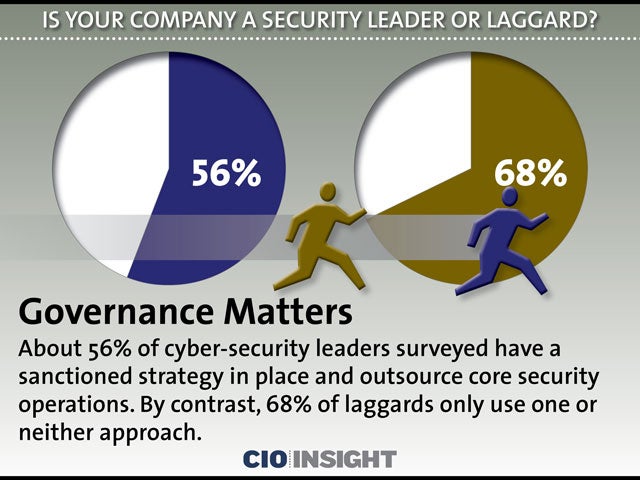 Governance Matters
Governance Matters
About 56% of cyber-security leaders surveyed have a sanctioned strategy in place and outsource core security operations. By contrast, 68% of laggards only use one or neither approach.
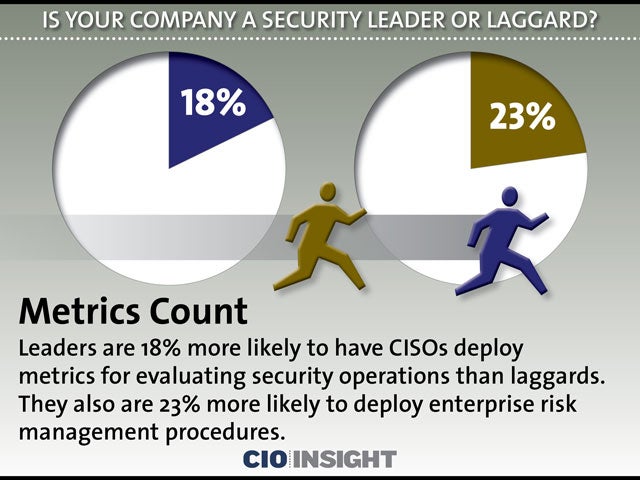 Metrics Count
Metrics Count
Leaders are 18% more likely to have CISOs deploy metrics for evaluating security operations than laggards. They also are 23% more likely to deploy enterprise risk management procedures.
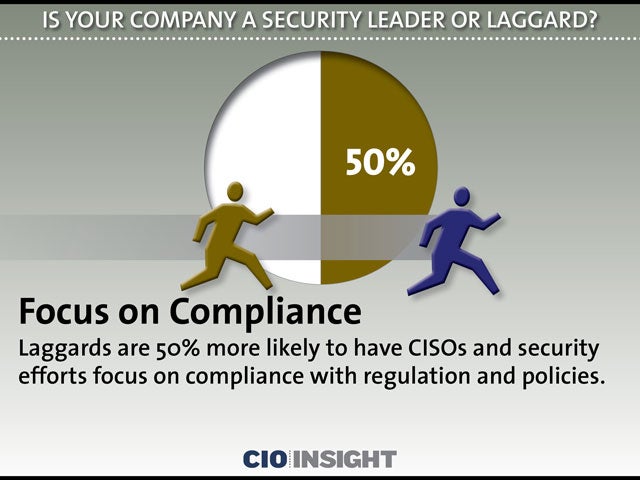 Focus on Compliance
Focus on Compliance
Laggards are 50% more likely to have CISOs and security efforts focus on compliance with regulation and policies.
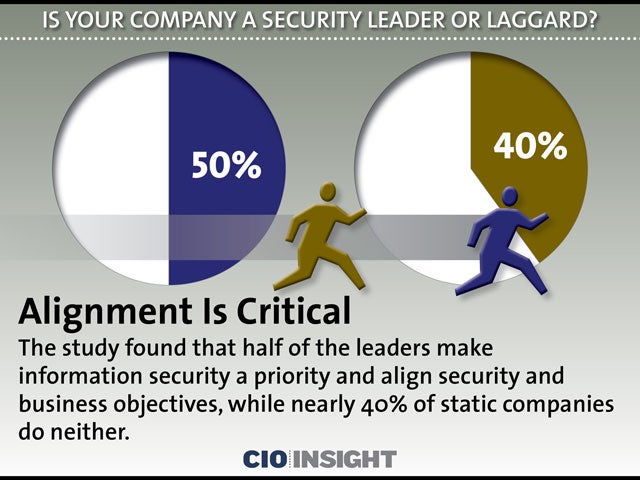 Alignment Is Critical
Alignment Is Critical
The study found that half of the leaders make information security a priority and align security and business objectives, while nearly 40% of static companies do neither.
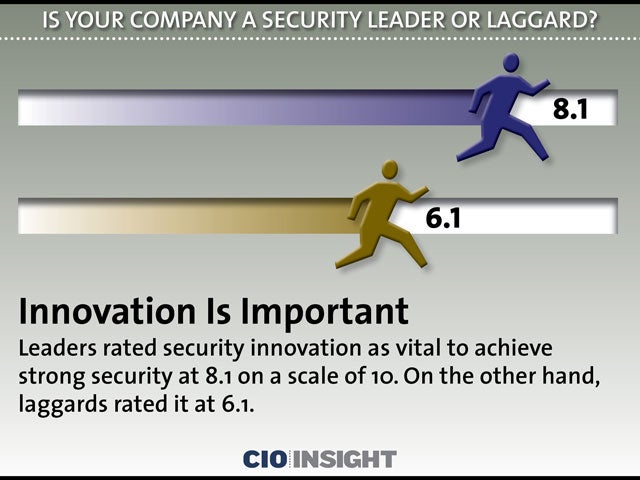 Innovation Is Important
Innovation Is Important
Leaders rated security innovation as vital to achieve strong security at 8.1 on a scale of 10. On the other hand, laggards rated it at 6.1.
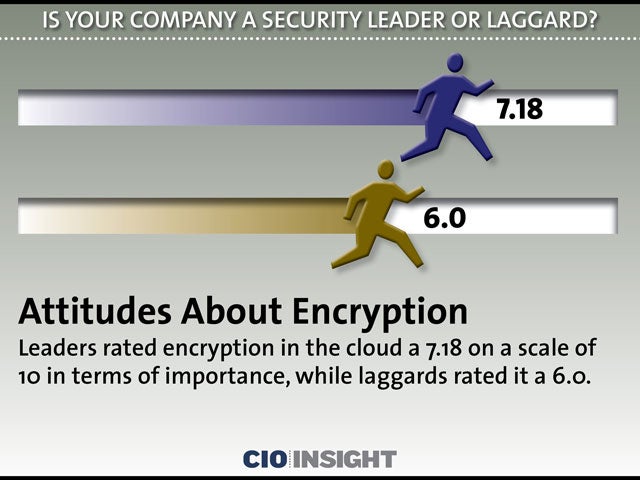 Attitudes About Encryption
Attitudes About Encryption
Leaders rated encryption in the cloud a 7.18 on a scale of 10 in terms of importance, while laggards rated it a 6.0.
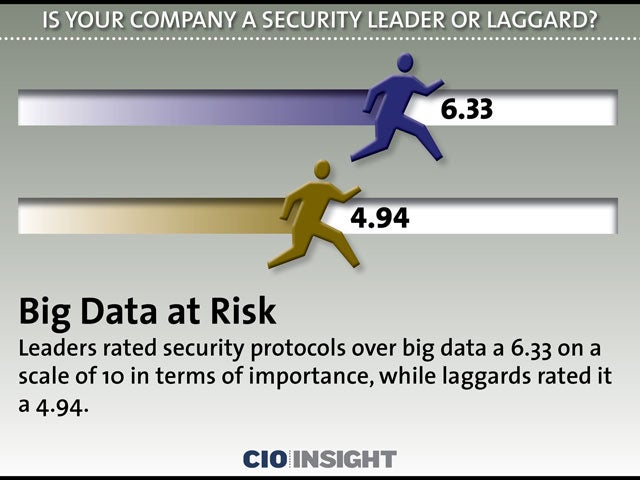 Big Data at Risk
Big Data at Risk
Leaders rated security protocols over big data a 6.33 on a scale of 10 in terms of importance, while laggards rated it a 4.94.
 An Eye on Network Activity
An Eye on Network Activity
Leaders rated the need to pinpoint anomalies in network traffic an 8.55 on a scale of 10 in terms of importance, while laggards rated it a 7.45.
 Organizations Dial Into BYOD
Organizations Dial Into BYOD
Both leaders and laggards have an eye on BYOD. Leaders rated it 7.16 on a scale of 10, while laggards rated it a 7.76.
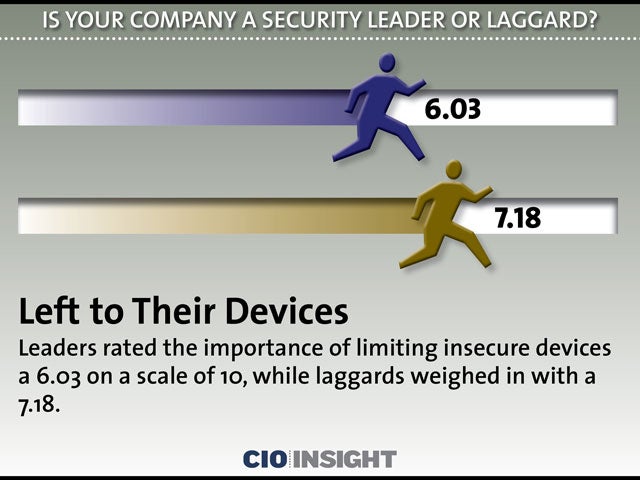 Left to Their Devices
Left to Their Devices
Leaders rated the importance of limiting insecure devices a 6.03 on a scale of 10, while laggards weighed in with a 7.18.
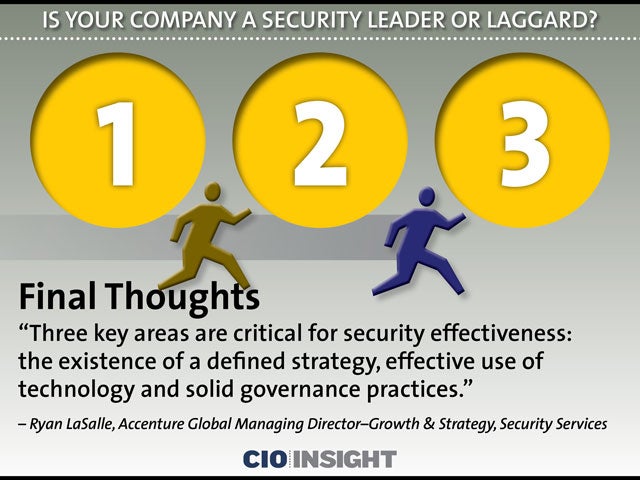 Final Thoughts
Final Thoughts
“Three key areas are critical for security effectiveness: the existence of a defined strategy, effective use of technology and solid governance practices.”–Ryan LaSalle, Accenture Global Managing Director–Growth & Strategy, Security Services
 Final Thought on Security
Final Thought on Security
“CIOs should seek out security capabilities that enhance the user experience and productivity and improve their ability to counter advanced threats.”–Ryan LaSalle, Accenture